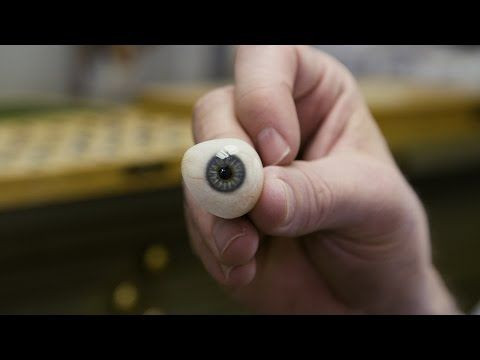Hand-Painted Eyes: This Is How Artificial Eyes Are Made When You Lose One

Artificial or glass eyes may seem almost like a prosthetic of the past, but they remain one of the most restorative processes for people who’ve lost an eye. An artificial eye can give a person their sense of self, confidence, and identity back, and the detailed work and artistic ability that goes into creating one is quite remarkable.
In a new Great Big Story video, ocularist David Gougelmann explains how his job is far more than just making fake eyes. “People always think I’m just doing this for cosmetic reasons, but actually it’s the restoration of a person,” he says.
Medical treatments for blindness and eye diseases have made huge leaps in recent years, with researchers working on optogenetics therapies, bionic lenses that can improve eyesight, and stem cell therapies like growing mini retinas to cure retinal diseases. But in many severe cases, like serious injuries or eye cancer, removing an eye is the only option for treatment. Restoring vision in the lost eye would be impossible at that point, but a prosthetic eye can at least provide the patient with a natural appearance and a sense of confidence.
First, the patient undergoes enucleation, or the surgical removal of the affected eye. Though the entire eye is removed, the muscles that controlled the eye’s movement remain, and are afterwards attached to the implant — allowing for some movement of the artificial eye.
The first step of the prosthetic eye process involves the ocularist trying to match the exact color of the person’s iris. As no two people have the same exact eye color, it’s quite difficult to get this step right. “We’ll sit there with a paintbrush and we’ll paint different structures — dots, dashes, striations, overlay that with different hues or different saturations of color to give it the three-dimensional effect we see in people’s natural eyes,” Gougelmann says in the video. Afterwards, the glass eye is fine-polished and fine-tuned to make it even more realistic.
“When somebody loses their eye, sometimes they feel like they’ve lost part of their self-being,” Gougelmann adds. “We make them feel whole again and confident to take on the whole world.”
Published by Medicaldaily.com



























